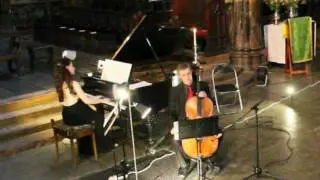Uncategorized
A. Piazzolla: Reinventing Tango music
A. Piazzolla: Reinventing Tango music
Argentine Tango
https://www.youtube.com/watch?v=ZDdktKLZxuA
Astor Piazzolla – “Being truthful with yourself”
Astor Piazzolla:
The Argentinian composer and Bandoneon player born in 1921, died in 1992.
He is considered to be one of the most talented musicians in Argentina and is part of our national pride worldwide.
He moved To New York at an early age and that’s the moment when he got in touch with Jazz music, a style that will blend later with Tango music. He started to study Bandoneon, an instrument that comes originally from Germany but its sounds relate immediately to Tango music since its beginning. He studied Piano from a Hungarian pianist that moved in the same building and that is the time in which he became interested in Bach’s music, his fugues and partitas were going to be part of the technical approach in his music later in his life.
When he returned to Argentina, he played in several Tango ensembles but studied orchestration, fugue and composition with Alberto Ginastera. We were lucky to have enjoyed his music on our last concert by the hands of Maestra Carolina Aguirre Anderson. Ginastera is, along with Piazzolla, one Argentina’s national treasure in Classical music as a pianist and composer.
He wanted to become a “serious” composer, but it was actually Nadia Boulanger, a French composer and orchestra conductor, in Paris 1953, that foster a change in Piazzolla’s career. She convinced him to follow his roots and compose Tango music, rather than making pieces based on other inspiration. This was decisive in his life. Nadia Boulanger not only helped Piazzolla, but she also helped talented musicians such as Aaron Copland, Elliot Gardiner, Daniel Barenboim, Stravinsky, Dinu Lipati and Phillip Glass to follow their own musical path.
Piazzolla’s style integrates elements of Tango, American Jazz, and European Classical music without the dance component as the main feature. In this innovative process, the composer’s harmonic language departs from the simple chords of Tango music, replacing it with rich sonorities, chromaticism, taken from Ravel, Stravinsky and Debussy’s harmonies, contrapuntal textures from J.S. Bach’s fugues and complex rhythms from Bela Bartok.
His unique style was not accepted by the Tango community for many years, as his music was not considered to be part of the Tango tradition, causing him many bitter moments, but always stayed truthful with himself.
Piazzolla not only contributed to developing a unique style that now is recognised worldwide but served as an inspiration for young composers and musicians in Argentina.
If you are interested in listening to another example of Contemporary composers of Argentinian Music, you can do it from Gisela Paterno’s “Phantasy for Violin and piano”
#JuanRezzuto #WKMTCONCERTS #WKMT #adultpianolessons #pianolessonslondon #jazzpianolessons #pianoteacher

